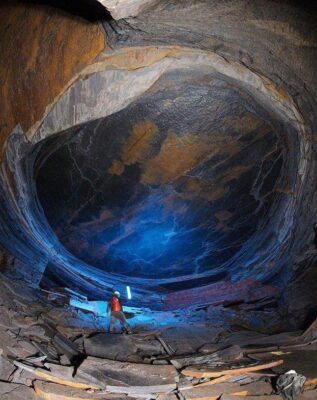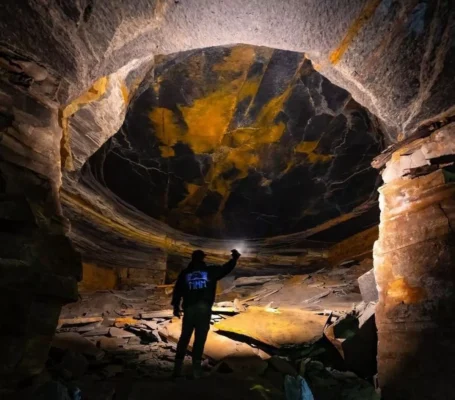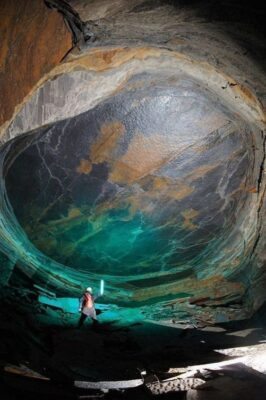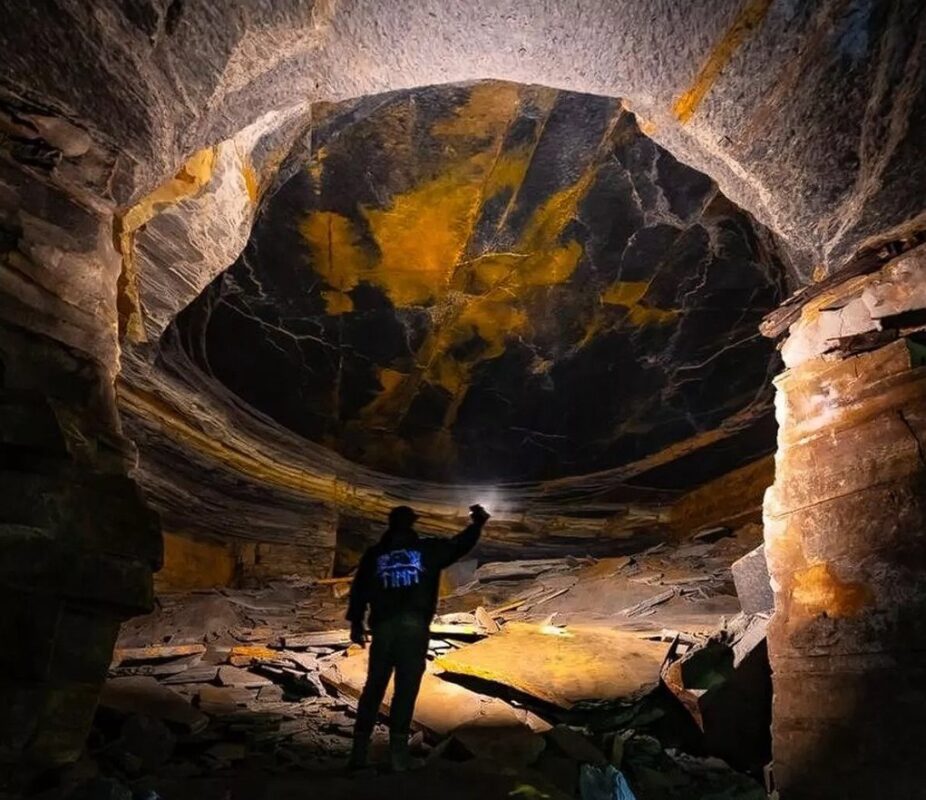Deep within the stone mines of Lancashire, England, lies a breathtaking natural formation known as The Dragon’s Eye. This metamorphic rock, with its intricate patterns and striking resemblance to a dragon’s eye, has captivated the imagination of geologists and nature enthusiasts alike. Let’s explore more mysteries with archeology. dulichvn.net

1. What Is The Dragon’s Eye?
The Dragon’s Eye is not just a rock; it is a masterpiece created by nature through centuries of geological processes.
1.1. The Formation of Metamorphic Rocks
Metamorphic rocks form under intense heat and pressure, transforming existing rocks into new structures. The Dragon’s Eye is a result of these powerful forces, creating a unique texture and appearance.
1.2. The Unique Patterns of The Dragon’s Eye
The swirling patterns and vivid colors of the rock mimic the mythical dragon’s eye, giving it an almost otherworldly allure. Each detail appears as though crafted by an artist, but it is purely nature’s handiwork.
1.3. A Geological Rarity
Such formations are incredibly rare, making The Dragon’s Eye a true geological gem and a symbol of the natural beauty hidden beneath the Earth’s surface.

2. The Discovery of The Dragon’s Eye
The story of The Dragon’s Eye’s discovery adds another layer of fascination to its legacy.
2.1. Unearthed in Lancashire
The formation was found in a stone mine in Lancashire, a region known for its rich geological diversity. Its discovery brought global attention to this otherwise quiet area.
2.2. A Surprising Find
Miners stumbled upon the formation unexpectedly, with its dragon-like appearance immediately sparking curiosity and awe.
2.3. Recognition by Experts
Geologists and scientists quickly recognized the significance of The Dragon’s Eye, not only for its visual appeal but also for the insights it offers into Earth’s metamorphic processes.

3. The Cultural and Scientific Significance of The Dragon’s Eye
Beyond its stunning appearance, The Dragon’s Eye holds cultural and scientific value.
3.1. A Mythical Connection
The formation’s resemblance to a dragon’s eye ties it to ancient myths and legends, making it a source of inspiration for storytellers and artists.
3.2. Insights into Earth’s History
Studying The Dragon’s Eye allows scientists to understand more about the geological forces that shape our planet and the timeline of these transformations.
3.3. A Tourist Attraction in Lancashire
The Dragon’s Eye has become a local landmark, drawing visitors from around the world eager to witness this natural marvel. It has boosted tourism and brought attention to the region’s geological heritage.
See more: The Triumphant Stele of Amenhotep III: A Window into Ancient Egyptian Power
Conclusion
The Dragon’s Eye is a testament to the beauty and power of nature. Discovered in the mines of Lancashire, this metamorphic rock formation is a symbol of geological wonder and mythical imagination. Whether you’re a scientist, a nature enthusiast, or someone drawn to its dragon-like mystique, The Dragon’s Eye offers something for everyone—a glimpse into the extraordinary world beneath our feet.


CÁC TIN KHÁC
Mark Twain & Olivia Langdon: A 36-Year Love Story Filled with Laughter and Devotion
The Tollund Man: A 2,400-Year-Old Mystery Preserved in a Danish Bog
Skara Brae: Scotland’s Hidden Neolithic Village
Porta Nigra: The Hidden Depths of Trier’s Iconic Roman Gate